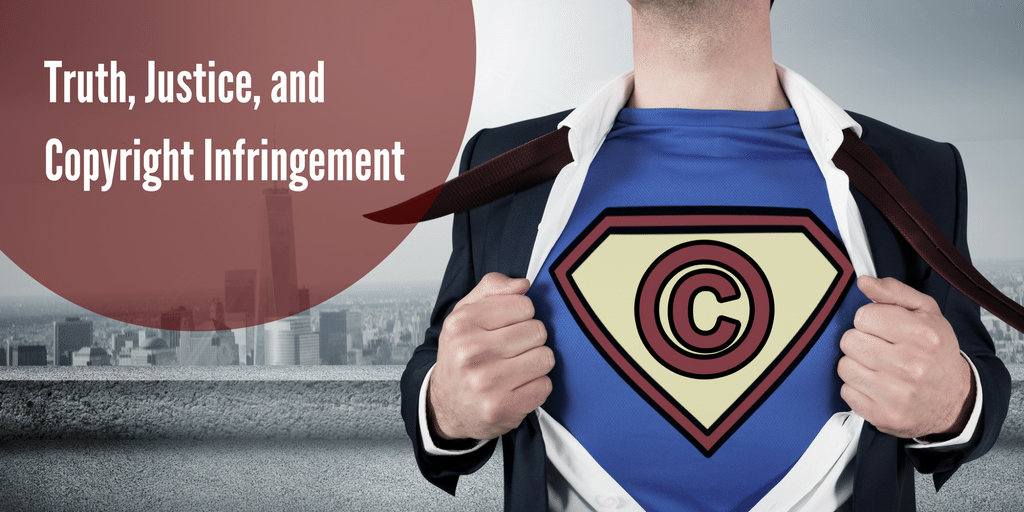 Legal Crash Course: What Is Copyright Infringement?
Legal Crash Course: What Is Copyright Infringement?
Copyright infringement is a serious concern for filmmakers. After all, everyone wants to protect their hard work and creative vision from being copied or taken advantage of.
Ensuring your film doesn’t violate someone else’s intellectual property is just as important as lighting, sound, or ambient music. In this article, you will be introduced to the basic concepts of copyrights, what constitutes infringement, and how you can protect yourself and your film project.
What Counts as Copyright Infringement?
According to the Library of Congress, copyright infringement is anytime someone reproduces, distributes, performs, publicly displays, or makes a derivative work from an existing, original expression without permission.
The law automatically protects any original artistic or creative expression from being copied or otherwise used without the creator’s permission. In practice, it can be difficult to know exactly what may count as copyright infringement because there are exceptions (parodies, for example, may be protected in many circumstances as “fair use”).
It is important to note that a copyright notice (the © mark and associated text) is not required for the work to be protected by law. Furthermore, and pertinent to filmmakers, registering your script with the WGA isn’t a bad thing, but it does not offer any copyright protection beyond that afforded automatically when you put the words to paper (or a hard drive). Only registering your script with the U.S. Copyright Office (Library of Congress) affords additional protection for your work by providing legal and official notice of your copyright claim.
How Can Films Infringe on a Copyright?
There are many, many ways a film can be subject to a copyright infringement claim. Some of these are obvious, some may seem straightforward (but are not), and some of these may surprise you. Your film may face a lawsuit if it is…
- Using an existing work as the basis of the story.
You are not allowed to make a film based on any existing novel, short story, or short film. According to EW, Disney settled this kind of lawsuit when the director of a short film claimed that Frozen had copied from her short film.
Creative works become available to use without the author’s permission after a period of time, and they enter the “public domain.” Determining exactly when a work becomes available this way can be convoluted.
- Using music in your film.
It is well established that hit songs and recordings are protected, and filmmakers must make arrangements to the appropriate licensing agencies to include them in their films.
What many filmmakers miss is that performances are also protected by copyright. This means that, although Pachabel’s Canon in D is in the public domain, any specific performance of that work is still copyrighted by the performers. The same is true for arrangements of a particular piece that have not yet made it to the public domain.
Many filmmakers were unpleasantly surprised to learn that (until recently) the song Happy Birthday was considered a copyrighted work. Warner/Chappell Music had been collecting royalties for years whenever the song was used in a film or TV show.
- Showing art in your film.
You might be forgiven for assuming you could show a piece of art in your film by getting permission from the owner of the piece. Unfortunately, unless it is properly transferred, the copyright for pieces of art stays with the artist, not the owner of the artwork.
Using art in your film can get complicated very quickly, sometimes requiring permission from unexpected rights holders. Even tattoos can be considered copyrighted material, requiring permission from the original artist to be re-created.
These are just a few of the ways that films can infringe upon an existing copyright. There are many more examples, such as typefaces (fonts) and some logos.
How Can You Avoid Copyright Infringement?
With all of these potential opportunities for copyright infringement, it might seem an impossible task to produce a film. Thankfully, there are some straightforward principles to help guide you:
- Use all original work. Don’t forget to get your talent to sign over their work to you as well.
- Pay close attention to the specific wording and limitations when using “royalty free” music, images, or other works. Some are only free for personal or non-commercial use, or require attribution.
- Don’t assume art or music is in the public domain. Take any informal advice you get from friends or colleagues about “fair use” with a grain of salt. Do your own research and due diligence.
- Get a professional film clearance package.
A full Clearance Package examines all aspects of your film: from script to chain of title. It will provide the most comprehensive review of your project by professionals who understand the industry and legal landscape.
At The Clearance Lab, we offer Clearance Packages that are available for levels of film projects, from indie films to global productions. Help your film avoid copyright infringement and secure your Clearance Package.

